How does Metformin Hydrochloride Prolonged Release Tablet work in Diabetes?
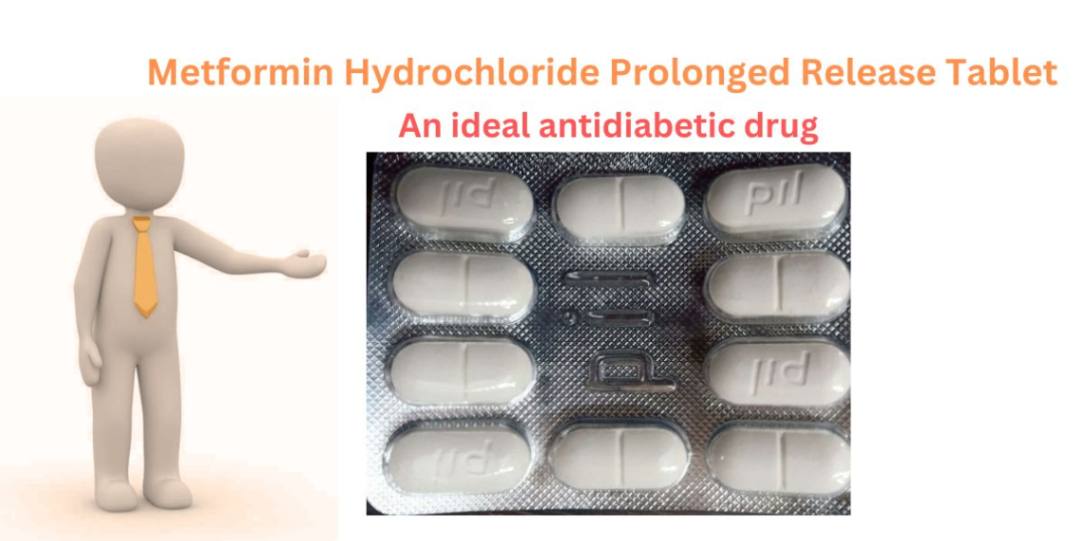 Posted On
Posted On
Contents
- Introduction
- What is metformin hydrochloride prolonged-release used for?
- What is the difference between metformin and metformin prolonged release?
- What are the benefits of Metformin Hydrochloride Prolonged Release tablets?
- How does metformin work in diabetes?
- How to take a metformin hydrochloride prolonged release tablet?
- Is metformin a safe antidiabetic drug?
- What are the side effects of metformin?
- Is it safe to take metformin in pregnancy?
- Is metformin hydrochloride safe for kidneys?
- Who should avoid taking metformin?
- Which brand of metformin is best?
- What medicine works best with metformin?
- 1. A combination of sulphonylureas and metformin hydrochloride prolonged-release tablet
- 2. DPP-4 inhibitors and metformin combinations
- 3. SGLT2 inhibitors and metformin combinations
- 4. Triple therapy combinations
- a. Voglibose, glimepiride & metformin hydrochloride
- b. Sitagliptin + metformin + glimepiride combinations
- c. Glimepiride + metformin + pioglitazone combinations
- What medications should not be taken with metformin?
- Conclusion
- FAQ
- Q 1. Can I stop taking metformin when my sugar gets back to normal?
- Q 2. Can I take metformin 30 minutes before a meal?
- Q 3. How many hours does metformin extended-release last?
- Q 4. What is the half-life of metformin prolonged release?
- Q 5. How long does prolonged-release metformin take to work?
Introduction
Everyone must have heard about metformin medicine. You might have seen Metformin PR, XR, ER, and IR tablets written on medicine strips. It represents a metformin hydrochloride prolonged release (PR, ER, XR) or immediate release (IR) tablet.
Metformin is one of the ideal antidiabetic medicines for type 2 diabetes mellitus (T2DM) patients.
This medicine is the most widely prescribed and considered a first-line medicine for T2DM.
This post will discuss everything about metformin medicine, such as uses, mechanisms, types of metformin release, dosage, side effects and so on.
Without further delay, let’s know about this medicine.
What is metformin hydrochloride prolonged-release used for?
Metformin hydrochloride prolonged-release tablet is a slow-release oral hypoglycemic agent. It is an approved drug to treat type 2 diabetes mellitus (T2DM) and prediabetes (recently diagnosed T2DM).
Moreover, it has an off-label use in PCOS (polycystic ovary syndrome).
This prolonged-release metformin tablet is slowly released in small proportions over a long period. It is not immediately released into your bloodstream at the moment of administration.
It effectively controls your elevated blood sugar level for an extended period.
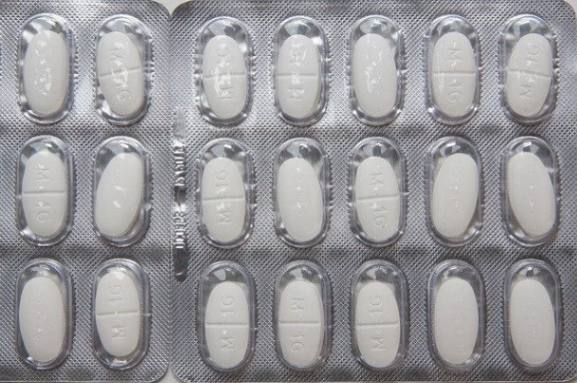
What is the difference between metformin and metformin prolonged release?
A simple metformin is considered an immediate release. So, metformin tablet comes in two formulations: –
- Metformin hydrochloride immediate release (IR) and
- Metformin hydrochloride extended-release (ER/XR) or prolonged release (PR).
Although Metformin IR and ER are the same medication. They have the same efficacy and reduce blood sugar levels with similar mechanisms.
The only difference is the rate of absorption.
Metformin hydrochloride immediate release (IR) is a conventional formulation release. It rapidly absorbs in your bloodstream and quickly controls your blood sugar level for 6 hours.
It has an incomplete absorption, with 40 to 60% oral bioavailability.
After 6 hours, the effect of the immediate release of metformin is reduced. You need to take another dose of metformin after 6 hours to maintain the therapeutic window.
On the contrary, Metformin hydrochloride prolonged release is a new formulation. It is prepared by hydrated polymers. These polymers help to release an active ingredient (metformin) slowly in your bloodstream.
It controls your blood sugar level for a long time, up to 12 hours. It reduces the frequency of daily dose of administration. You can take metformin ER/PR once or twice a day.
|
Key parameters |
Metformin Hydrochloride Immediate Release (IR) |
Metformin Hydrochloride Prolonged Release (PR/ER/XR) |
|
Rate of absorption |
Fast absorption with a rapid peak in blood stream |
Slow absorption without a rapid peak in blood stream |
|
Duration of efficacy |
Up to 6 hours |
Up to 12 hours |
|
Cost |
Cheap |
Expensive |
|
Frequency |
Thrice a day |
Once or twice a day |
|
Maximum plasma concentration (C max) |
3 hours |
7 hours |
|
GI side effects |
More |
Very less |
|
Risk of hypoglycemia |
More |
Less |
|
Patient compliance |
Reduce |
Improve |
What are the benefits of Metformin Hydrochloride Prolonged Release tablets?
Although, Metformin ER/PR is more expensive than IR. Still, it would be best if you prefer metformin sustain release tablets over metformin IR because of its lot of benefits, such as –
- Effective than IR
- Reduce the risk of hypoglycemia
- Reduce bloating, flatulence and improves GI tolerability
- Allow once daily dosing
- Improve patient compliance or adherence
How does metformin work in diabetes?
Metformin is a biguanide class of drug that helps to reduce your blood glucose level in three ways –
1. Reduce gluconeogenesis
Gluconeogenesis means the formation of new glucose. It decreases or delays the absorption of your new glucose molecule in the intestine to supply less glucose in your blood.
2. Reduce hepatic glycogenolysis
Glycogenolysis means the breakdown of glycogen into glucose. It reduces the breakdown of glycogen to glucose. It helps decrease glucose formation in the liver to reduce glucose transport from the liver to the blood.
3. Reduce insulin resistance
Insulin resistance means cells stop responding to insulin. It helps increase muscle sensitivity and makes your body respond well to insulin.
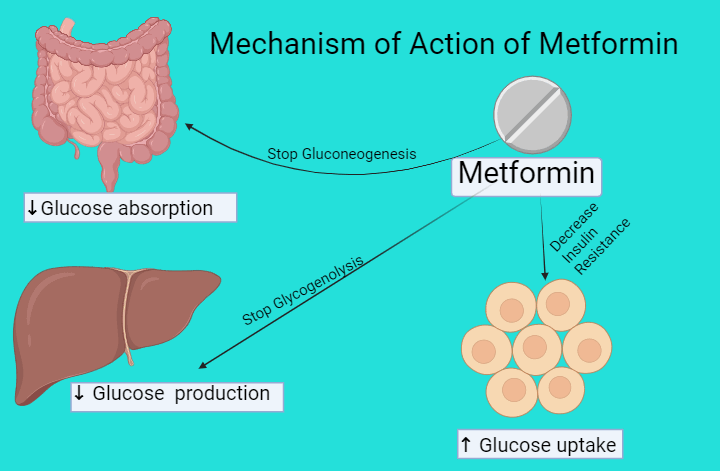
How to take a metformin hydrochloride prolonged release tablet?
The usual initial dose of metformin tablet is 500 mg twice or thrice a day. If you have been diagnosed with T2DM, your doctor can start metformin 500 mg twice daily.
The dose can be increased if your blood glucose is uncontrolled.
Based on glucose measurement, the metformin dose should be adjusted after 10 to 15 days.
The maximum dosage of metformin per day is 3 g (approximately 35 mg/kg/day), taken as 3 divided doses. You should not take metformin more than 3000 mg in a day because it may cause lactic acidosis that could be fatal.
It would be best to take your metformin tablet with or after meals to minimize gastric side effects.
Is metformin a safe antidiabetic drug?
According to ADA, Metformin is the preferred antidiabetic drug for type 2 diabetes mellitus patients. It is absolutely safe for adults, children over 10 years and older patients.
A review of literature published in the Journal of the American Medical Association (JAMA) in 2019 suggested that metformin has the biggest concern over lactic acidosis; because of this, it was taken off the US market.
But later on, it was reintroduced in 1995 because it has been proven efficacy in lowering blood glucose levels. It has also proven safety data in other circumstances.
So you don’t need to panic about its side effects. Metformin rarely causes lactic acidosis, only in extreme overdose (>3000 mg/day).
The evidence suggests that metformin has a cardioprotective role. It is the only antidiabetic agent proven to reduce cardiovascular risk. So, suppose you are struggling with heart disease with type 2 diabetes. In that case, it will help decrease cardiovascular events (like heart attacks).
It is also safe in mild to moderate kidney impairment function, but it could be dangerous in chronic kidney failure.
An article published in the Lancet Healthy Longevity, January 2021, assessed some data on metformin and mortality risk in female patients hospitalised with COVID-19 (Coronavirus disease).
It was a retrospective cohort study. It was concluded that metformin significantly reduced mortality in type-2 diabetes female patients who were hospitalised due to COVID-19.
This medicine helps to reduce inflammation proteins like TNF-alpha and other inflammatory adipokines that appear to make COVID-19 worse.
There are some other crucial benefits of metformin –
- it does not cause weight gain
- it does not cause hypoglycemia like other oral hypoglycemic medication (unless combined with other antidiabetic drugs)
Hence, it is a safe, effective and well-tolerated medicine for type 2 diabetes patients.
What are the side effects of metformin?
The most common side effects of metformin are gastric disturbances. During the initiation of therapy, you may have –
- diarrhoea
- nausea or vomiting
- bloating
- stomach pain
- heartburn
- constipation
- loss of appetite
- unpleasant metallic taste in the mouth
Taking a metformin hydrochloride prolonged-release tablet can overcome this side effect.
Metformin also causes lactic acidosis. It rarely happens, but it is metformin’s most serious side effect. Due to this, metformin has a black box warning from the US FDA.
Lactate builds up in your body in lactic acidosis, which is challenging to eliminate. Lactic acidosis may cause hypotension (low blood pressure), hypothermia (decreased body temperature) and eventually death.
It could be more fatal if you are already compromised with kidney and liver problems.
A recent study has shown that metformin causes vitamin B12 deficiency. Suppose you have been taking metformin for a long time. In that case, it may increase the risk of low vitamin B12 levels, particularly in anaemic or peripheral neuropathy patients.
Is it safe to take metformin in pregnancy?
Metformin drug comes in category B. Usually, Category-B drugs are considered safe in pregnancy.
An exploratory case-control study published in BMJ (British Medical Journal, 2018) found no evidence of an increased risk of birth defects (or congenital disabilities) during metformin therapy in pregnancy.
You can use metformin in pregnancy, but it is not a preferable drug. Insulin injections are considered the gold standard treatment (drug of choice) in pregnancy.
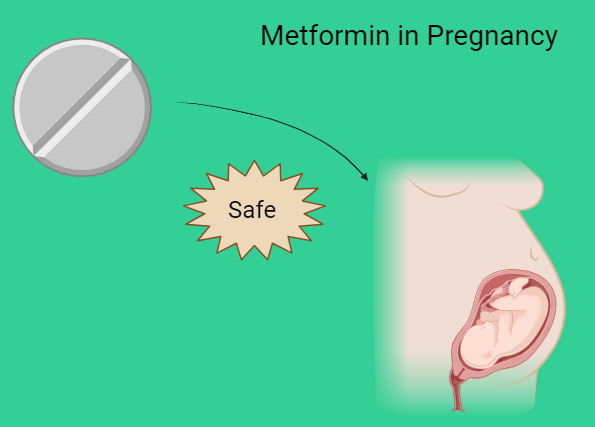
Is metformin hydrochloride safe for kidneys?
If you are an adult with a normal kidney function (GFR >90 ml/min). In that case, metformin is an absolutely safe antidiabetic drug.
However, Metformin drug has a well-known side effect: lactic acidosis. The excess production of lactic acidosis can damage your kidney. So, you need to regularly monitor your kidney (i.e. KFT every 3 to 6 months) if you are on metformin.
Metformin medicine should be avoided if someone has a kidney disease (or GFR < 30 ml/min).
The daily dose of metformin can be reduced as per GFR value, like –
- If the GFR value is 60 to 89 ml/min, the maximum daily dose is 3000 mg in 2 to 3 divided doses.
- If the GFR value is 45 to 59 ml/min, the maximum daily dose is 2000 mg in 2 to 3 divided doses.
- If the GFR value is 30 to 44 ml/min, the maximum daily dose is 1000 mg in 2 to 3 divided doses.
- Metformin is contraindicated if the GFR value is < 30 ml/min.
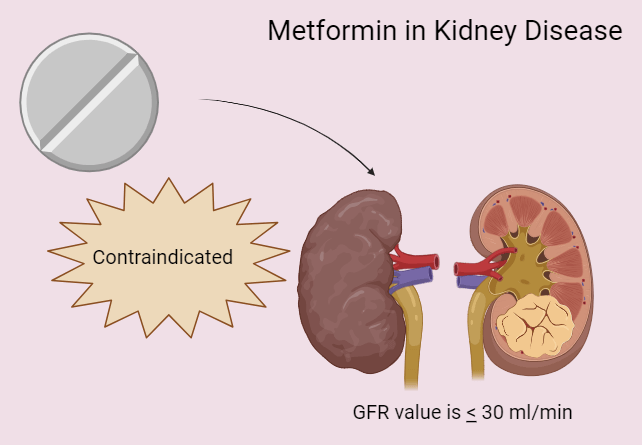
Who should avoid taking metformin?
It would be best if you don’t take metformin in the following circumstances –
- If your blood creatinine level is over 150 micromols/l (normal range 74.3 to 107 micromoles per litre).
- If you are already dealing with chronic liver disease.
- If you are going for imaging procedures in iodinated contrast media. According to a study, contrast media procedure with metformin can worsen the kidney condition that induces nephropathy. You should stop the metformin therapy 48 hours before going for imaging therapy.
Which brand of metformin is best?
You may get metformin hydrochloride tablets in immediate release and sustain release form with different popular brand names such as –
- Okamet 500/1000 mg (Metformin hydrochloride tablets IP)
- Glycomet 500 SR (Metformin hydrochloride sustained release tablets IP)
- Diamet SR 500/1000 mg (Metformin hydrochloride prolonged-release tablet)
- MF-1000 SR (Metformin hydrochloride sustained release tablets IP)
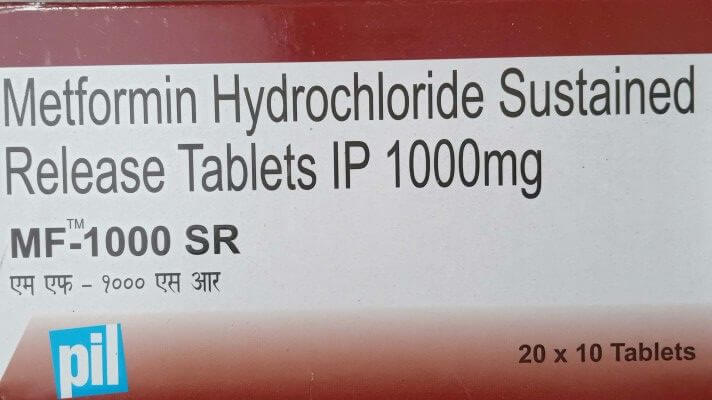
What medicine works best with metformin?
Metformin tablet works better with some other oral hypoglycemic agents. It comes in such combinations –
1. A combination of sulphonylureas and metformin hydrochloride prolonged-release tablet
You can get glimepiride and metformin FDC (Fixed dose combination) in brands of Glycomet GP 1/2, Gluconorm plus G1/2/3/4, etc.
Here, glimepiride belongs to the sulphonylureas class of drugs. It is an insulin secretagogue that helps to secrete insulin from the pancreas.
This FDC effectively controls your blood sugar level.
According to a study, glimepiride and metformin FDC are preferred choices in various complications like neuropathy, retinopathy, nephropathy, peripheral vascular disease, diabetic foot and cardiovascular disease. This combination is not associated with the risk of hypoglycemia.
It is the best antidiabetic combination for non-obese diabetic patients. This dual therapy can be used in the step 2 diabetic treatment plan if your HbA1C is more than 7.5%.
You can also get a gliclazide and metformin hydrochloride fixed-dose combination. Like glimepride, gliclazide works in a similar mechanism that comes in sulphonylureas.
The gliclazide and metformin fixed-dose combination is available in popular brands like Glizid M 60/500 mg & 80/1000 mg, Diamicron XR Mex 60/500 mg, Glycinorm-M.
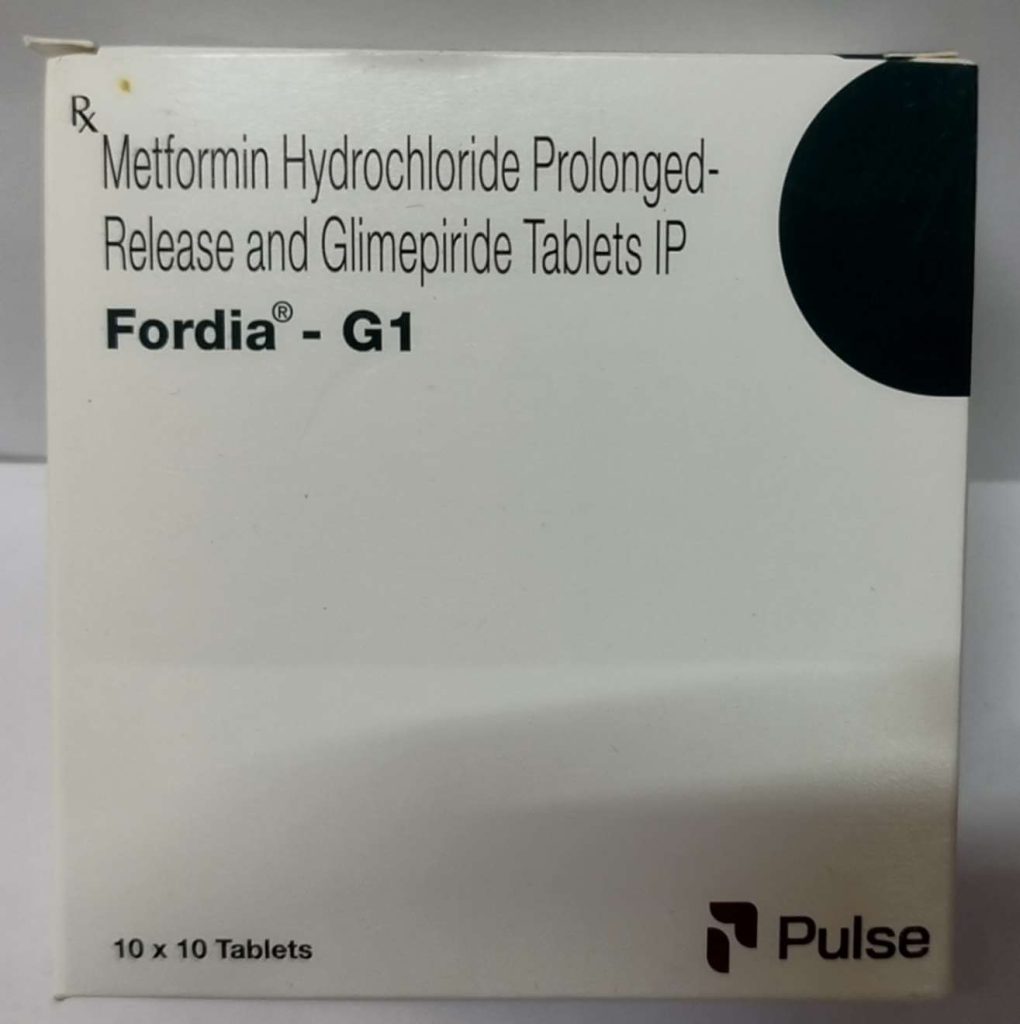
2. DPP-4 inhibitors and metformin combinations
DPP-4 inhibitors (or Gliptins) are those drugs that stimulate incretins (like GLP-1 and GIP) by inhibiting DPP-4 enzymes.
These incretins go to the pancreas and secrete insulin to control blood sugar levels.
Gliptins work effectively with metformin, which is also considered an ideal strategy for treating diabetes.
You can get various fixed-dose combinations of gliptins and metformin in different brands –
- Teneligliptin and metformin hydrochloride (Ziten M, Zita-Met plus, Dynaglipt-M, Tenglyn M, Teneza-M)
- Saxagliptin and metformin HCL extended-release tablets (Kombiglyze XR)
- Vildagliptin and metformin HCL tablets (Galvus Met, Jalra M)
- Sitagliptin and metformin HCL tablets (Janumet, Sitazit M ER)
- linagliptin and metformin hydrochloride extended-release tablets (Trajenta Duo)
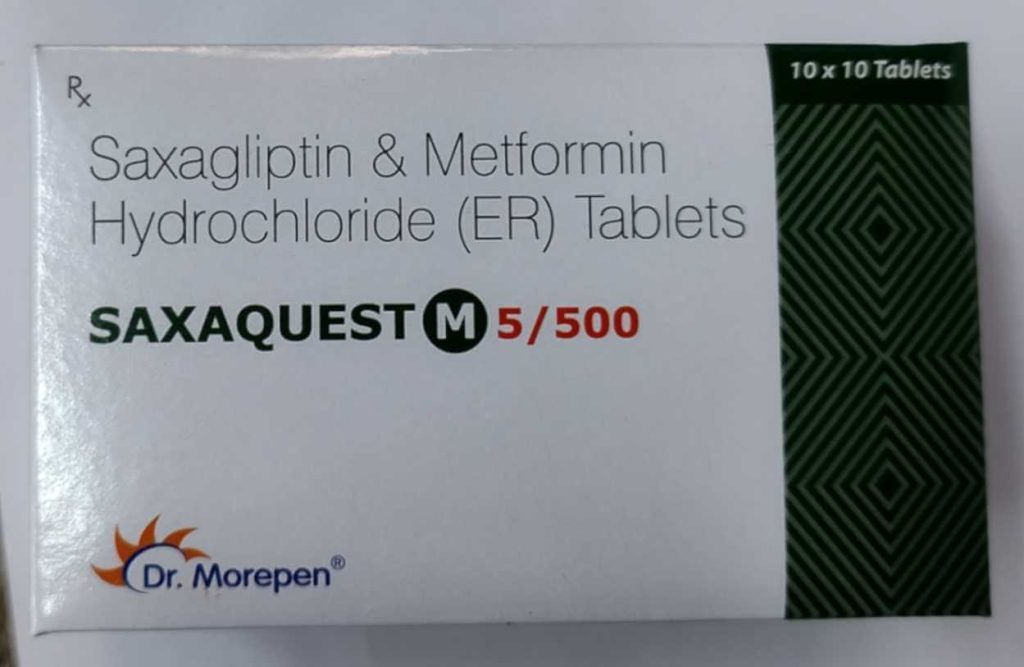
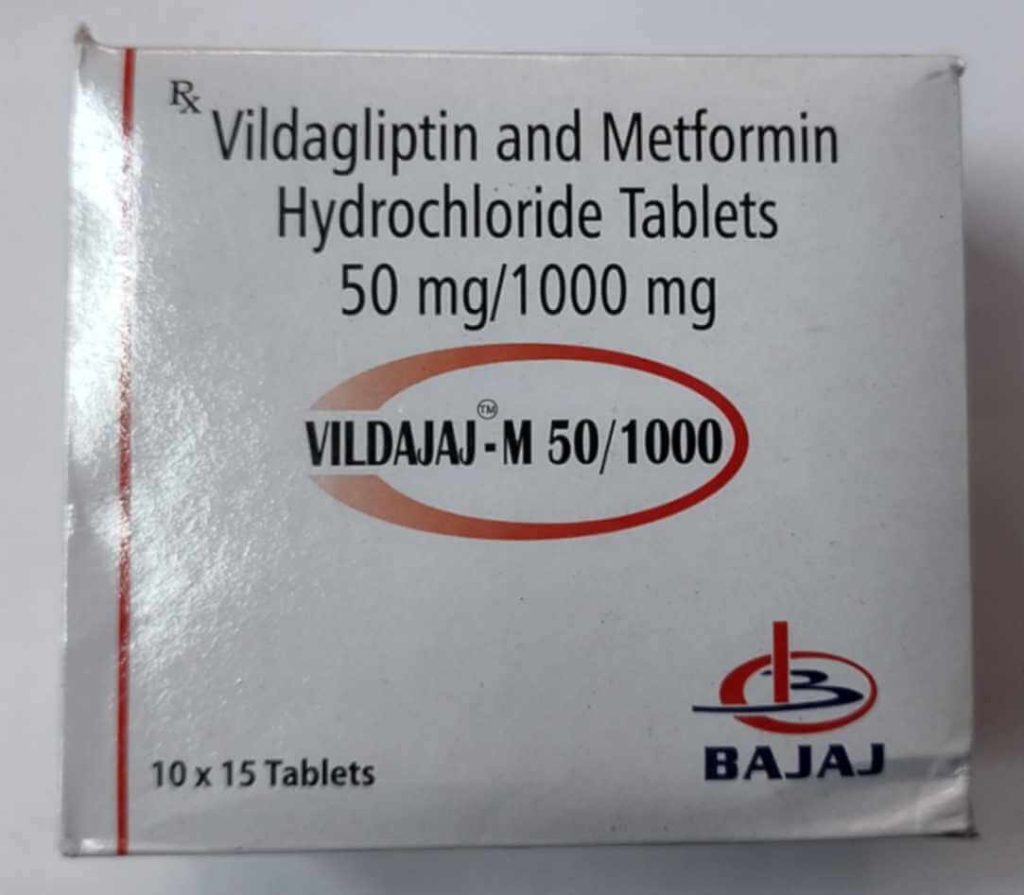
3. SGLT2 inhibitors and metformin combinations
SGLT2 inhibitors remove excess blood sugar from the kidney. There are three popular drugs in SGLT2 inhibitors – Dapagliflozin, Empagliflozin and Canagliflozin.
These drugs are also known as Gliflozins.
You can get SGLT2 inhibitors and metformin fixed-dose combination in the market –
- Empagliflozin and metformin hydrochloride tablets (Jardiance Met, Gibtulio Met)
- Canagliflozin and metformin hydrochloride tablets (Vokanamet, Invokamet)
- Dapagliflozin and metformin hydrochloride tablets (Xigduo, Daflora M)
4. Triple therapy combinations
a. Voglibose, glimepiride & metformin hydrochloride
This triple therapy (voglibose, glimepride, and metformin) fixed-dose combination is used when your HbA1C is >9%.
Voglibose is an alpha-glucosidase inhibitor that delays the process of digestion and absorption of carbohydrates.
It decreases glucose absorption in blood circulation, which helps reduce elevated blood sugar levels.
Here, this triple combination works together to effectively control blood sugar levels –
- Glimepiride directly go to the pancreas and stimulates beta cells to secrete insulin
- Voglibose reduces the absorption of carbohydrates
- Metformin reduces the process of gluconeogenesis, glycogenolysis and insulin resistance.
This FDC is available in Voglimac GM2, Glycomet trio, Voglicare MG2 brands, etc.
b. Sitagliptin + metformin + glimepiride combinations
You can be prescribed this triple (Sitagliptin + metformin + glimepiride) combination if your diabetes is uncontrolled. This combination is available with the brand name Sitakite-GM2.
Here, Sitagliptin indirectly releases insulin by inhibiting the DPP4 enzyme, while glimepride directly secretes insulin from beta cells of the pancreas.
c. Glimepiride + metformin + pioglitazone combinations
Pioglitazone helps to reduce insulin resistance by stimulating the PPAR gamma receptor.
The combination of glimepiride, metformin and pioglitazone is available with brands of Gluconorm PG 2 forte tablet SR, Triglynase 2 forte tablet SR, Glimestar PM1 tablet ER, etc.
What medications should not be taken with metformin?
Although, there are no severe interactions with other drugs during metformin therapy. Still, you may require caution or consult your doctor if you are taking –
- Pain-relieving medicines like NSAIDs (Ibuprofen, celecoxib etc.)
- Medications that increase urine output, especially loop diuretics (Furosemide).
- Drugs used in the treatment of hypertension (ACE inhibitors and angiotensin receptor antagonists)
- Certain medicines treat asthma (beta 2 agonists such as salbutamol, terbutaline, etc.)
- Corticosteroids like prednisolone
There are some drugs (such as verapamil, rifampicin, cimetidine, dolutegravir, ranolazine, trimethoprim, vandetanib, isavuconazole, crizotinib, olaparib) which may reduce the kidney function.
These drugs may increase the metformin concentration in your blood. So, you may require close monitoring of your kidney function, especially if you are a kidney disease patient.
Conclusion
Metformin is a first-line drug when a person is newly diagnosed with type 2 diabetes mellitus.
It doesn’t matter whether you take simple metformin or metformin hydrochloride prolonged-release tablet. Both have the same efficacy.
The only advantage of metformin hydrochloride extended-release tablets is to relieve gastric problems. It controls your blood sugar effectively throughout the day, even a single dose.
All in all, metformin is a relatively safe, effective, and well-tolerated drug with minimal side effects.
You must consider this ideal antidiabetic medicine after consulting your doctor.
If you found this post informative, please share it on social media.
FAQ
Q 1. Can I stop taking metformin when my sugar gets back to normal?
Metformin can be reduced or stopped if your blood sugar level is average. But you need to maintain a healthy lifestyle.
Q 2. Can I take metformin 30 minutes before a meal?
The absorption rate of metformin is better on an empty stomach. Still, it is not recommended to take metformin before a meal. It can cause hypoglycemia and gastric disturbances. So, it would be best to take metformin after your meal.
Q 3. How many hours does metformin extended-release last?
Like immediate-release metformin, prolonged-release metformin has a similar onset of action of about 1.5 hours. It increases the duration of action by up to 24 hours. So, a single dose of metformin prolonged release can be sufficient in a day.
Q 4. What is the half-life of metformin prolonged release?
The half-life of metformin’s prolonged release is 6.5 hours, and the immediate release of metformin is 1.5 to 4.9 hours. The half-life of metformin may be prolonged in kidney disease conditions.
Q 5. How long does prolonged-release metformin take to work?
Your diabetic signs and symptoms start to improve in the first week of metformin therapy. Still, seeing a complete effect may take 2 to 3 months.
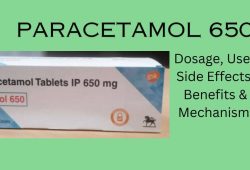


คาสิโน
Awesome article.
cialis 10mg price in india
Hi! This post could not be written any better!
Reading through this post reminds me of my old room mate!
He always kept chatting about this. I will forward this post to him.
Pretty sure he will have a good read. Many thanks for sharing!